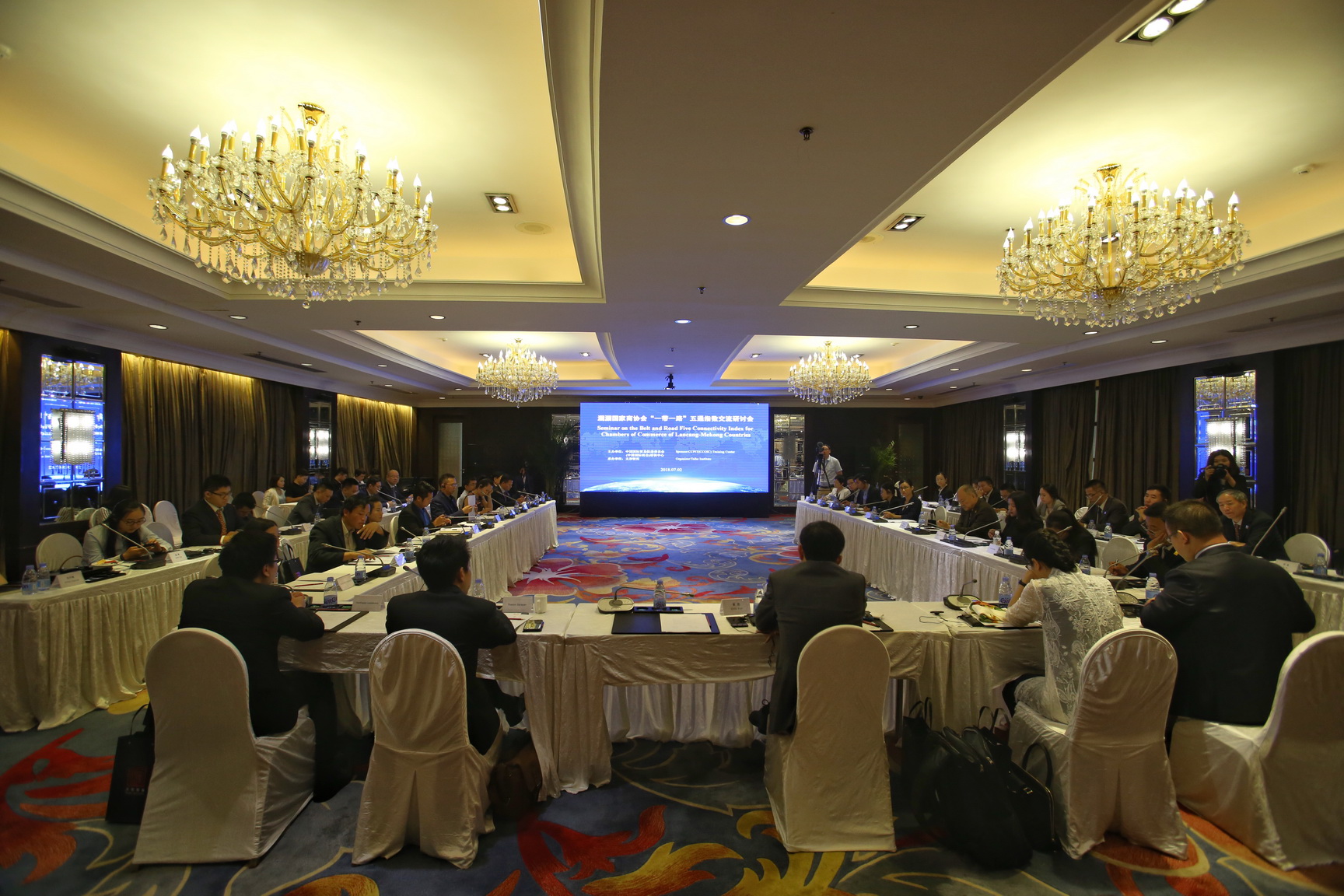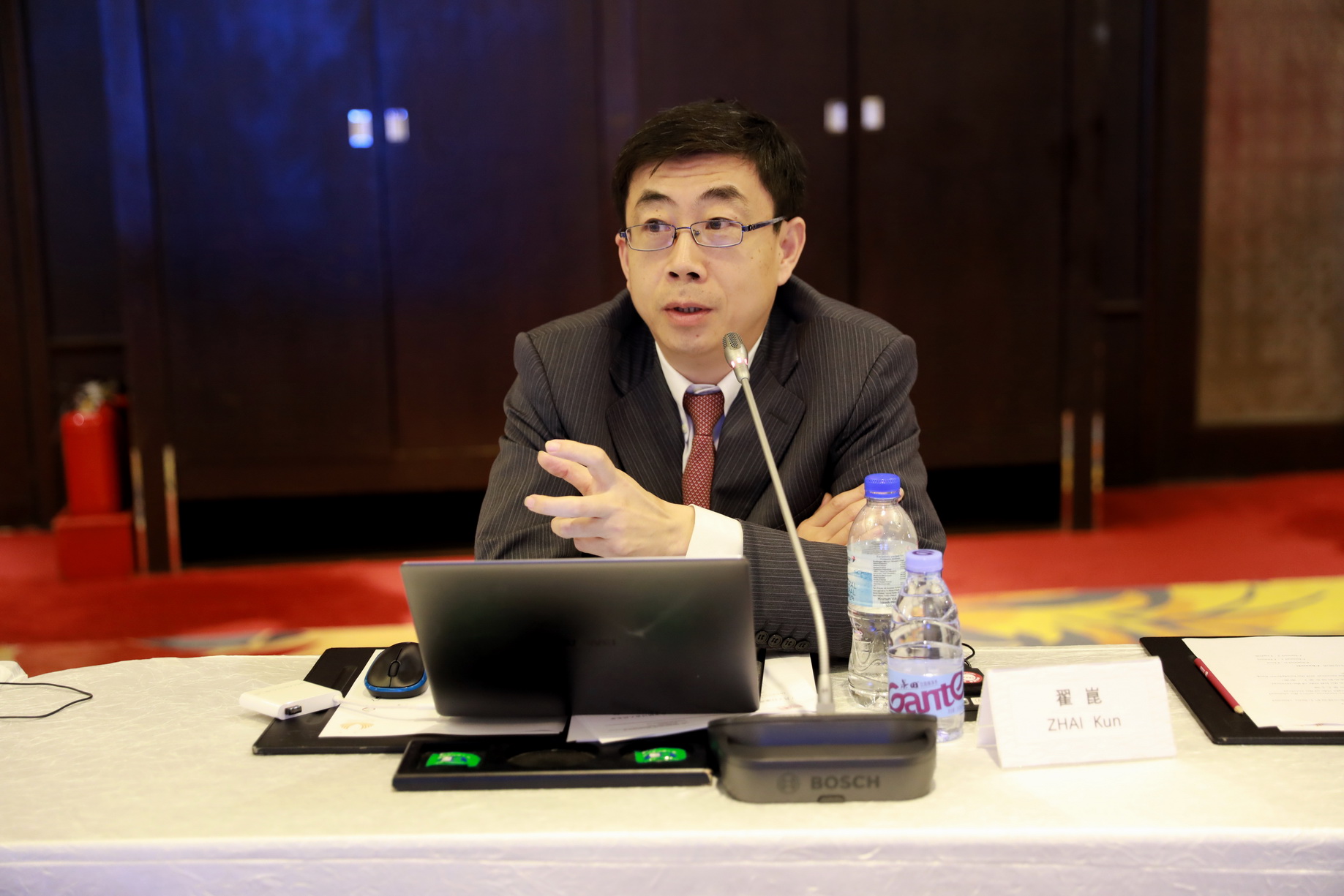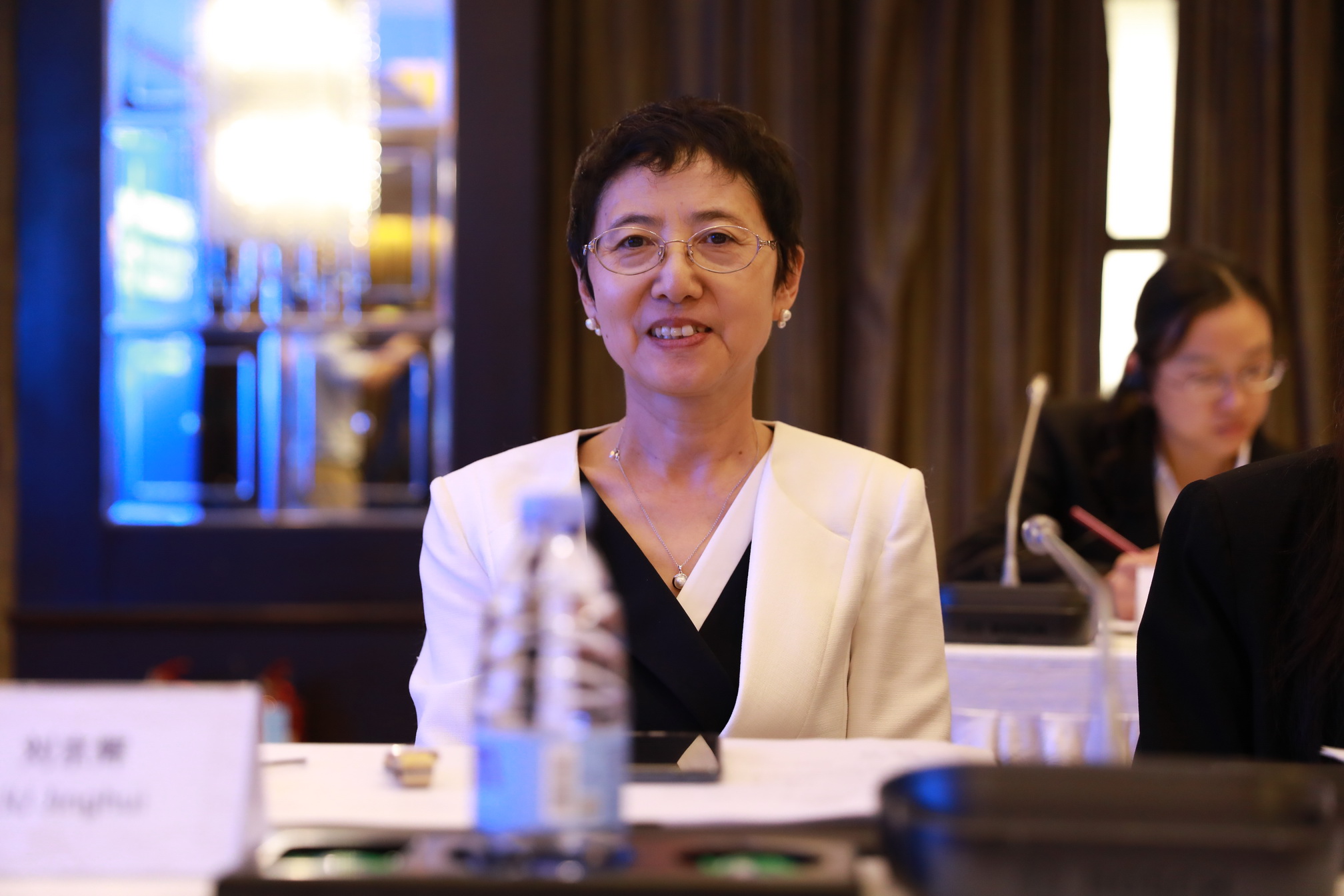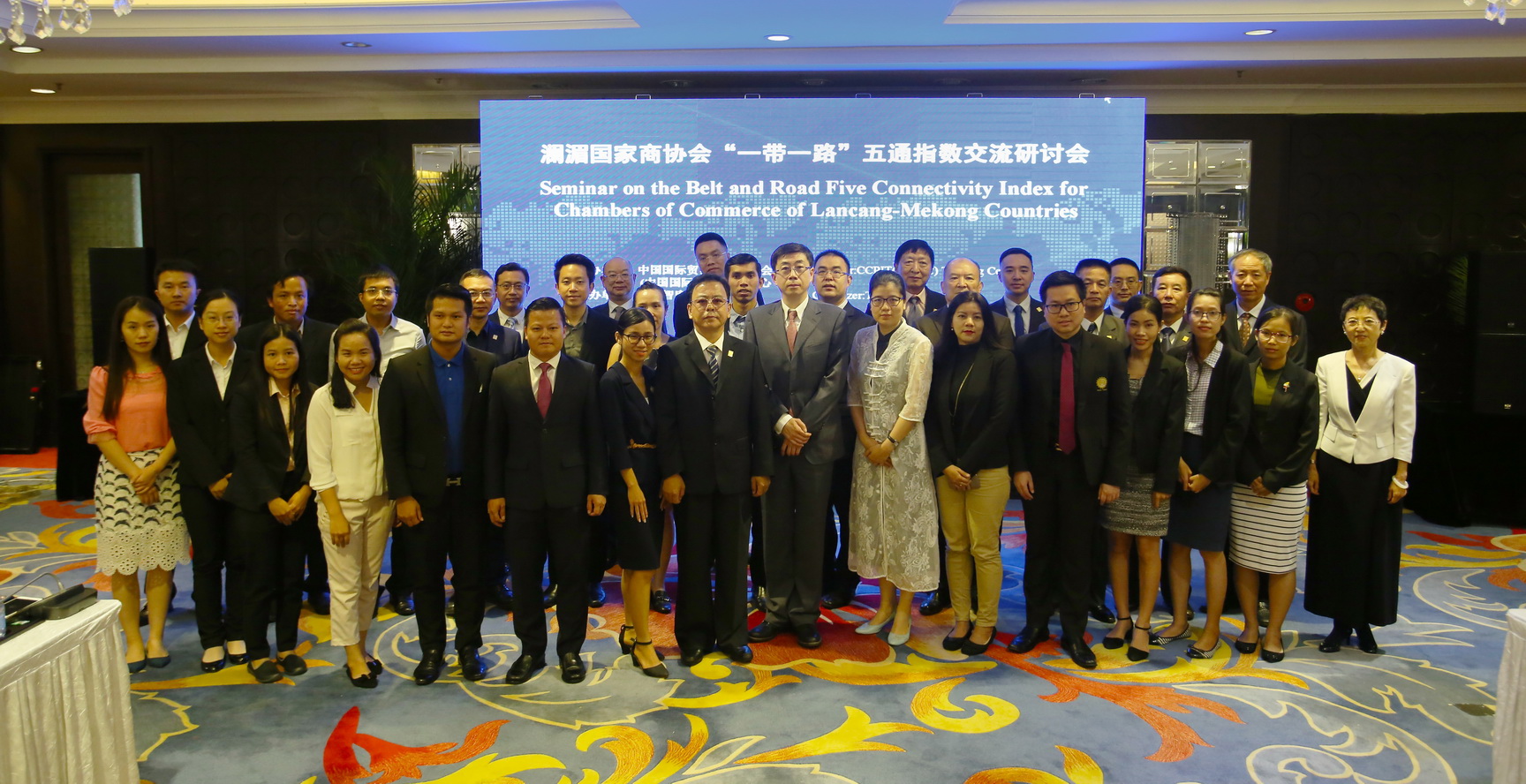On July 2nd, the Taihe Institute and the National Business Association Delegation of the Lancang-Mekong countries [1] held a seminar in Beijing. This included hearing from Commercial and Trade officials as well as Business and Industry representatives who are from Vietnam, Thailand, Myanmar, Cambodia and Laos who came to China for training visits. Discussions and exchanges were held around the issue: five types of connectivity of “The Belt and Road” initiative [2], which is the research cooperation outcome from the Taihe Institute and the School of International Relations at Peking University, a common interest to all parties. The China Council for the Promotion of International Trade Training Center and the Asian Division of the Ministry of Commerce both sent representatives to the meeting and delivered keynote speeches.

In January 2018, the second Lancang-Mekong cooperation meeting was successfully held in Phnom Penh, Cambodia. During this discussion, a common goal was set out which is to achieve 225 billion US dollars in trade between China and the Mekong River countries by 2020. According to the data from the Ministry of Commerce, since the establishment of the Lancang-Mekong cooperation, these countries have made considerable progress in the field of five-links. In 2016, the number of Chinese tourists to the Mekong River areas reached a historical peak of 12.819 million U.S. dollars. In 2017, the total trade volume between China and the Mekong River countries reached 223.96 billion U.S. dollars which is an 18% year-on-year growth. Up to now, the 10 billion yuan preferential loan which China announced during the first Lancang-Mekong Cooperation(LMC) leader’s meeting has been put in place. The Lancang-Mekong mechanism has become a model for sub-regional cooperation and a focus area of the Taihe Institute.

Senior Researcher of Taihe Institute, Professor of School of International Relations at Peking University ,Zhai Kun
In this meeting, Professor Zhai Kun, Senior Researcher at the Taihe Institute and Professor at the School of International Relations in Peking University, introduced one part of their research outcomes about “The Belt and Road” initiative. He outlined the five types of connectivity within the Lancang-Mekong countries and the results will be released on the Taihe Institute’s website soon. These ideas reviewed the development history, achievements and existing problems related to this mechanism. He also put forward suggestions on the future development of this. Professor Zhai Kun said that Lancang-Mekong cooperation mechanism is a significant part of the collaboration between China and the Association of Southeast Asian Nations. In the past two years, the Lancang-Mekong countries were developing at the fastest economic growth rate among ASEAN countries. In the future, the development of economic and trade relations between China and the Lancang-Mekong countries will transform from the G2G (Government to Government) to the C2C (Consumer to Consumer) and P2P (People to People). Only in this way can avoid the impact of political changes in the country so as to build a more solid foundation for economic development and cooperation between China and related countries.

Senior researcher of Taihe Institute Liu Jinghui
Taihe Institute believes that the establishment of the Lancang-Mekong cooperation mechanism is based on economic considerations. Its future development shall refer to the experiences and practices of the Shanghai Cooperation Organization. At present, the "Islamic State" terrorists have begun to infiltrate into Southeast Asian countries. China has a large number of investment projects, migrant workers and tourists in this region, and Chinese overseas interests are also growing in this region, so cooperation in security field needs to be strengthened. Youth is the future of the country. Enhancing youth exchanges is of vital importance to people. The Chinese government has special policies and financial support in this regard. Last year, more than 62,000 students from all over the Lancang-Mekong countries studied in China throughout the year. These students and Chinese students dined, lived and studied together, which helped them better understand each other, and enhanced their cultural cognition and recognition of each other's countries. At the same time, the Lancang-Mekong countries should also take practical measures to build a better platform for small and medium-sized private entrepreneurs and provide better policy support, legal protection and business consulting services to encourage these enterprises “goingglobal”.
The representatives of Commerce Association of the Lancang-Mekong countries believed that “The Belt and Road”Initiative and the Lancang-Mekongcooperation mechanism have brought new opportunities to the economic development of relevant countries and regions, and the level of regional interconnection has been continuously improved. With the Contacts and exchanges with China in infrastructure construction, energy, finance, tourism and other fields, outcomes have become increasingly frequent and fruitful. Although they are facing some risks and uncertainties, they still hold a bright prospect. In the future, they are willing to strengthen innovative cooperation with China. At the same time, they hope to exchange more with Chinese civil institutions such as Taihe Institute so as to find and explore more space for practical cooperation together.

Group photo after the seminar
This seminar deepened the understanding of the status and problems of The Belt and Road”on five types of connectivity as well as fostered a better understanding of Chinese non-government institute. In the future, Taihe Institute will further strengthen cooperation with relevant state agencies, and continuously to promote exchanges between national and non-governmental organizations along “The Belt and Road”,as well as to contribute to the development of “The Belt and Road”.
Note:
[1] the Lancang-Mekong countries: The Lancang River, which originated in the Tanggula Mountain in Qinghai, China, was called the Mekong River after flowing through Yunnan and leaving Xishuangbanna. It has flowed through Myanmar, Laos, Thailand, Cambodia and Vietnam five countries. Its total length is 4,880 kilometers, with a drainage area of 810,000 square kilometers. On March 23, 2016, the representatives of the six countries held a cooperation meeting in Hainan for the first time to confirm the cooperation mechanism of the “six countries ofLancang-Mekong”.
[2]Five types of connectivity of “TheBelt and Road”: The Connectivity System consists of five first-level indicators, including Policy coordination , Facilities connectivity, Unimpeded trade, financial integration, and people-to-people bond , and 15 second-level indicators and 41 third-level indicators.
-

- China-US trade war not yet at climax 18 September , 2018
-

- Comparing SCO to NATO inappropriate 16 September , 2018
-

- Sustainability and climate action: overcoming psychological ... 11 October , 2018
-

- 2018 Taihe Civilizations Forum Content Highlights 15 April , 2019
-
2018 Content Highlights
-

- Rashid Alimov Secretary-General of the Shanghai Cooperation Organization(2016-2018).
-

- Mohamed Sameh Amr Professor of International Law Department at Cairo University. He is also a ...
-

- Irina Bokova Distinguished Fellow of Taihe Institute, Director-General of...
